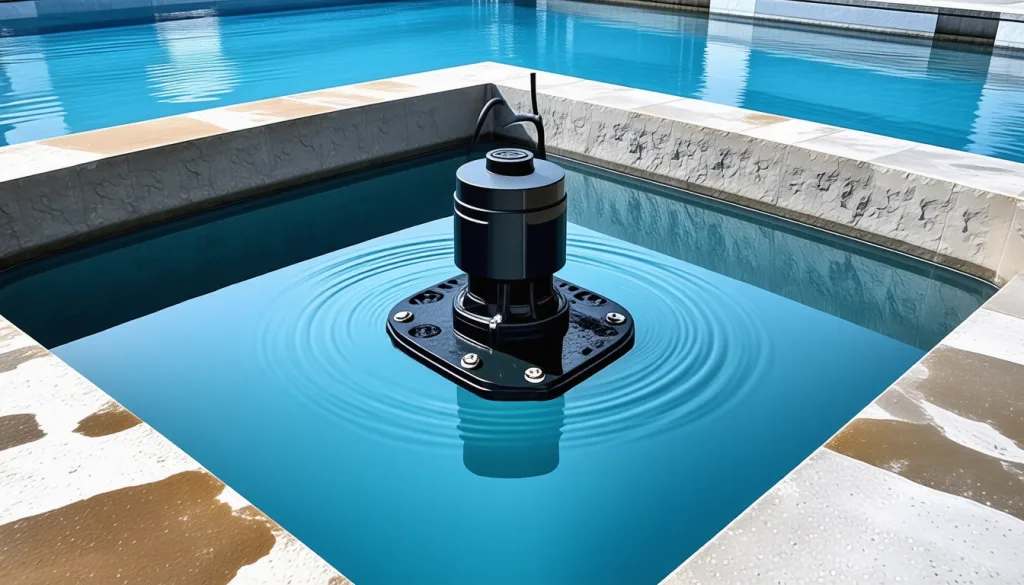In the realm of flood prevention, sump pumps play a crucial role in safeguarding basements from water damage. Understanding the various types of sump pumps available is essential for homeowners looking to invest in the best solutions for their specific needs. While all sump pumps serve the fundamental purpose of preventing water accumulation, the method and mechanics behind their operations can vary greatly.
A primary differentiation among sump pumps is between pedestal and submersible types. Pedestal sump pumps have the motor positioned above the sump basin, perched on a long stand or “pedestal.” This design keeps the electrical components safe from water, making these pumps particularly suitable for environments with fluctuating water levels or smaller sump basins. Their exposed design facilitates easier access for maintenance and repair, which can be a significant advantage in terms of long-term usability and cost efficiency. However, they tend to be noisier during operation than their submersible counterparts.
Submersible sump pumps, on the other hand, are designed to be placed directly within the sump pit and operate underwater. This setup not only reduces noise but also enhances the unit’s ability to handle larger volumes of water, making these pumps ideal for larger basements or regions with high water tables. They also tend to have a longer lifespan because they are less prone to overheating, as the surrounding water provides natural cooling. That said, their submerged position may complicate maintenance and necessitate more extensive checks to ensure optimal performance over time.
Within these two basic categories, sump pumps can be further specialized with additional features and capabilities:
- Battery Backup Systems: Ideal for homes in areas prone to power outages, these systems ensure that the sump pump continues to operate even when the primary power source fails. This added layer of protection can be crucial during severe storms.
- Water-Powered Backup Pumps: If battery maintenance and replacement costs are a concern, a water-powered backup pump is an attractive alternative. They utilize the home’s plumbing water supply to create suction power, functioning independently from the electrical grid.
- Combination Units: Offering the best of both worlds, combination sump pumps integrate a primary pump with a backup system (battery or water-powered), providing comprehensive protection against basement flooding.
Making a choice between these options can be nuanced and might require balancing initial costs with the long-term benefits of reliability and maintenance. The following table offers a comparative look at some of the key features and typical pricing for different sump pump types:
| Type | Noise Level | Maintenance Ease | Average Cost Range |
| Pedestal | High | Easy | $60 – $170 |
| Submersible | Low | Moderate | $100 – $400 |
| Combination Unit | Varies | Varies | $250 – $600 |
Investing time to understand the distinctions between these systems can prevent unexpected plumbing issues and ensure your sump pump meets your household’s unique flood prevention needs. A well-chosen pump is a long-term asset, providing peace of mind by protecting your basement effectively and economically.
Estimated cost breakdown
When considering the financial aspects of installing a sump pump, it’s important to thoroughly understand the potential costs involved. These costs can vary greatly depending on several factors, such as the type of pump you select, the complexity of the installation, and whether you decide to hire professional help.
1. Pump Purchase Price:
– The initial cost of a sump pump itself varies. As indicated earlier, pedestal pumps range from $60 to $170, submersible pumps range from $100 to $400, and combination units can cost between $250 and $600. Prices will fluctuate based on brand, capacity, and special features such as built-in alarms or backup batteries.
2. Installation Supplies:
– Additional materials will be required for a complete installation. Expenses include PVC piping, which typically ranges from $2 to $5 per linear foot, check valves (costing around $8 to $15), pipe fittings, and sealants. Additionally, you may need a basin if one is not already present, which can cost anywhere from $50 to $150.
3. Professional Installation Fees:
– Hiring a professional installer can ensure a seamless installation process, but it comes at a price. On average, labor costs can range from $400 to $800, depending on the complexity of the job and regional labor rates. If the project involves complicated plumbing or electrical work, such as connecting a backup system, the costs may be higher.
4. Permits and Inspections:
– In some areas, local building codes require you to obtain permits for sump pump installation, especially if it involves significant plumbing work. The cost for these permits varies by location but typically ranges from $50 to $150. Inspections might also be necessary and could add additional costs if required by local ordinances.
5. Electrical Work:
– If your sump pump requires its own dedicated circuit or extra electrical work, such as upgrades to your current system, you may need to hire an electrician. This cost can range from $300 to $500, depending on the requirements of your home’s electrical setup.
6. Optional Backup Systems:
– Adding a battery or water-powered backup will contribute to the total cost. A battery backup system typically costs between $150 and $600. In contrast, a water-powered backup system usually costs between $200 and $500, depending on the model and complexity of the installation.
Analyzing these individual cost elements allows for a comprehensive overview of what you might expect to invest in protecting your basement from water damage. While a sump pump installation can vary widely in pricing, understanding these details—combined with smart planning and comparison shopping—will help ensure that you choose the best system for your budget, offering effective flood prevention and peace of mind.
DIY vs. professional installation
Deciding whether to tackle the installation of a sump pump on your own or to hire a professional is a crucial consideration when planning for flood prevention in your basement. For the hands-on homeowner who enjoys DIY projects, installing a sump pump can be a rewarding endeavor. Opting for a DIY installation can significantly reduce costs, as the primary expenses will be limited to purchasing the sump pump and necessary materials such as PVC piping, fittings, and sealants. However, it’s essential to be realistic about your skill level when dealing with a project’s potential complexity.
Embarking on a DIY installment requires confidence and competence with both plumbing and basic electrical work, as mistakes can lead to water damage or dysfunctional systems. Homeowners with experience in similar tasks may find it manageable, especially if they choose a straightforward installation involving a pedestal pump. Nevertheless, the intricacies of submersible or combination units, which may require deeper sump pits or more involved plumbing connections, can present more significant challenges. Additionally, any electrical component installation, such as connecting a backup battery, should be approached with care to avoid hazards.
On the other hand, hiring a professional installer brings a wealth of experience and expertise to the process. Professionals not only have a thorough understanding of sump pump mechanics but are also well-versed in local building codes, ensuring your installation meets regulatory requirements. This compliance is crucial, particularly when permits are mandatory or specific inspection protocols must be followed. Moreover, professional installation can offer the assurance that comes with craftsmanship—minimizing the risk of future issues related to incorrect installation practices.
Although professional involvement comes with added costs, typically ranging from $400 to $800 for labor alone, the peace of mind and warranty services often accompanying such workmanship can be invaluable. Moreover, in cases where a battery or water-powered backup system is being integrated, the complexities associated with additional plumbing or electrical connections can be expertly managed, thereby optimizing the system’s efficiency and durability.
Ultimately, the decision between DIY and professional installation hinges on balancing cost considerations, personal skill level, and the complexity of the plumbing system in question. Whether choosing to personally handle the project or entrust it to professionals, ensuring that the sump pump is installed correctly is of utmost importance to maintain effective flood prevention in your basement. A well-executed installation will be a cornerstone investment, providing long-term protection and peace of mind.
Money-saving tips
When aiming to protect your basement on a budget, there are numerous strategies to consider that can make the installation of a sump pump more cost-effective without compromising the effectiveness of your flood prevention efforts. Knowledge is power, so start by thoroughly understanding your unique basement conditions, plumbing requirements, and water table characteristics. This will help you make informed decisions that align with your needs and budget.
First, consider purchasing your sump pump during sales events or at wholesale stores, where prices may be significantly reduced. Look out for online deals or discounts, and don’t hesitate to check multiple retailers to find the best bargain. Additionally, some manufacturers offer rebates or incentives for certain models, so be sure to explore these opportunities, which can lead to considerable savings.
Opting for a basic model without unnecessary bells and whistles can also cut costs. While extra features like alarms or Wi-Fi capability might be appealing, they aren’t essential for a basic setup. Choosing a model tailored strictly to your requirements helps maintain both functionality and budget.
If you’re up for the challenge, DIY installation can be a substantial money-saver by eliminating professional labor costs. Many online resources, including detailed video tutorials and step-by-step guides, can provide the support needed for a successful DIY project. However, it’s crucial to ensure you have the necessary skills and tools, especially when dealing with plumbing and electrical work, to avoid potential complications such as water leaks or electrical hazards.
Another angle to consider is bundling your purchase with a backup system. While incorporating a backup solution might seem like an added expense, buying these components as a package deal often comes with reduced pricing compared to purchasing each separately. Thus, consider investing in a battery or water-powered backup at the time of installation to ensure enhanced flood prevention without inflated costs.
For additional savings, explore financial aid options available in your community. Some local or state governments offer grants, loans, or incentives to homeowners for improving flood prevention infrastructure. Checking with local municipalities or home improvement funds might uncover programs that support cost reduction in sump pump installations.
Finally, maintaining open communication with your installer can also help in managing costs. If hiring a professional is necessary, negotiate their fees and get quotes from multiple contractors to compare prices and services. Discuss any cost-effective alternatives they might offer, such as using available parts or recommending simpler installation techniques that retain the efficacy of the system.
By combining strategic purchasing decisions, exploring potential financial aids, and opting for budget-friendly installation techniques, you can effectively safeguard your basement while keeping expenses manageable. Ensuring efficient flood prevention without breaking the bank is achievable with the right planning and sensible approaches to sump pump installation.
Long-term maintenance strategies
To ensure your sump pump continues to protect your basement effectively over the long term, regular maintenance is key. By implementing a few straightforward strategies, you can extend the lifespan of your sump pump and maximize its flood prevention capabilities.
Firstly, it’s crucial to perform routine inspections of your sump pump, at least once or twice a year. Early spring and late fall are ideal times for these checks, as this aligns with periods when basement flooding risk is typically higher due to melting snow or increased rainfall. During these inspections, test the pump’s functionality by pouring a bucket of water into the sump pit to ensure the pump activates automatically and efficiently discharges the water. This simple exercise can illuminate potential issues before they escalate.
Regularly cleaning the sump pit and pump is also important. Debris build-up in the pit, such as dirt, gravel, and other small particles, can obstruct the pump’s impeller, leading to reduced efficiency or even damage over time. Disconnect the pump from the power source before cleaning, then remove and clean both the pit and pump to ensure unobstructed operation. It might also be beneficial to periodically check the pump’s discharge lines, as these can be susceptible to clogs or freezing, particularly in colder climates. Ensuring these lines remain clear will help maintain optimal system performance.
Pay special attention to the float switch, an essential component responsible for activating the pump. A stuck or malfunctioning float switch can prevent the pump from operating when needed, heightening the risk of flooding. Ensure the float moves freely, unobstructed by debris or wiring, to maintain responsive pump operation.
Investing in a backup power source will ensure that your sump pump continues to protect your basement even during power outages, which often accompany severe storms. Battery backup systems or water-powered alternatives act as a safeguard, providing peace of mind that flood prevention measures are consistently operational.
Lastly, consider professional servicing every few years to keep your sump pump in optimal condition. A professional can provide insights into the pump’s performance and identify any hidden issues that might not be apparent during routine homeowner checks.
Taking these proactive maintenance steps will not only enhance your sump pump’s reliability but also protect your basement more effectively from flooding risks, ensuring your home remains a safe and dry environment.
—
In conclusion, understanding the intricacies of sump pump installation, from types and costs to installation choices, is essential for effective flood prevention while managing expenses. By selecting the right system for your specific needs and adhering to careful maintenance practices, you can protect your basement on a budget, securing your home against potential water damage for years to come.






